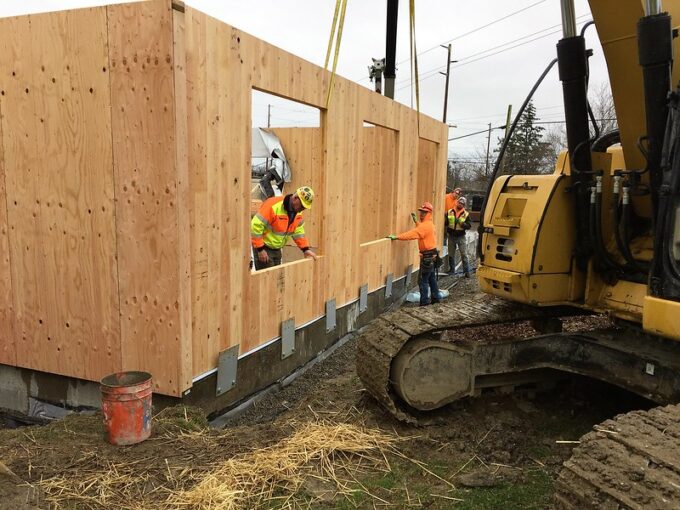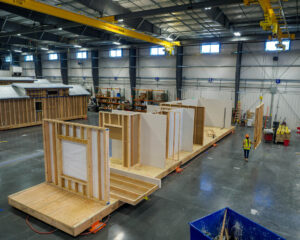Understanding CLT and Its Fire Resistance
CLT is an engineered wood product made by layering lumber in perpendicular directions and bonding them with structural adhesives. This creates a strong, stable, and fire-resistant building material.

Key Fire Resistance Characteristics of CLT:
- Charring: When exposed to fire, CLT forms a protective char layer on the surface. Therefore, this char insulates the inner layers, slowing down the fire’s progress.
- Self-Extinguishing: CLT’s char layer helps limit oxygen supply to the inner layers, reducing the likelihood of continued burning.
- Structural Integrity: Even after charring, CLT maintains its structural integrity longer than traditional wood framing.
Comparing CLT to Traditional Wood-Framed Construction
Traditional wood-framed construction is more susceptible to fire than CLT due to its thinner, less dense components.
Fire Resistance in Traditional Wood Framing:
- Rapid Burning: Thin wood members ignite and burn quickly.
- Structural Weakness: Traditional framing loses structural integrity faster during a fire.
- Limited Protection: Lack of a protective char layer means faster degradation.
In contrast, CLT’s dense, multi-layered structure provides superior fire resistance, making it a safer choice for commercial construction.
Fire Ratings for CLT in the IBC
The International Building Code (IBC) addresses fire ratings for CLT in commercial buildings. The IBC recognizes CLT as a viable construction material, provided it meets specific fire-resistance ratings.
IBC Fire Resistance Provisions:
- Fire Resistance Ratings: The IBC requires CLT assemblies to achieve specific fire resistance ratings, typically one to three hours, depending on the building type and use.
- Testing Standards: CLT must be tested according to ASTM E119 or similar standards to ensure compliance.
- Encapsulation: In some cases, additional fire protection, such as gypsum board, may be required to enhance fire resistance.
Applications of CLT in Commercial Construction
CLT is versatile and can be used in various building types and sizes, from low-rise offices to mid-rise residential buildings.
Examples of CLT Applications:
- Office Buildings: CLT provides a sustainable and aesthetically pleasing alternative to steel and concrete.
- Educational Facilities: Schools and universities benefit from CLT’s quick construction and durability.
- Multi-Family Housing: CLT’s fire resistance and acoustic properties make it ideal for apartments and condos.
- Public Buildings: Libraries, community centers, and other public structures benefit from CLT’s strength and fire resistance.
Conclusion
In conclusion, CLT offers superior fire resistance compared to traditional wood-framed construction, thanks to its charring, self-extinguishing properties, and structural integrity. The IBC addresses fire ratings for CLT, ensuring its safe use in various commercial building types and sizes. As a versatile and sustainable material, CLT is increasingly becoming a preferred choice in modern construction.
By understanding the fire resistance characteristics of CLT and adhering to IBC guidelines, builders and architects can create safe, durable, and sustainable commercial buildings. If you are considering CLT for your next project, reach out to our team of experts at EVstudio and we can assist in the evaluation and coordinated A/E design for a smooth and successful project.
References:










